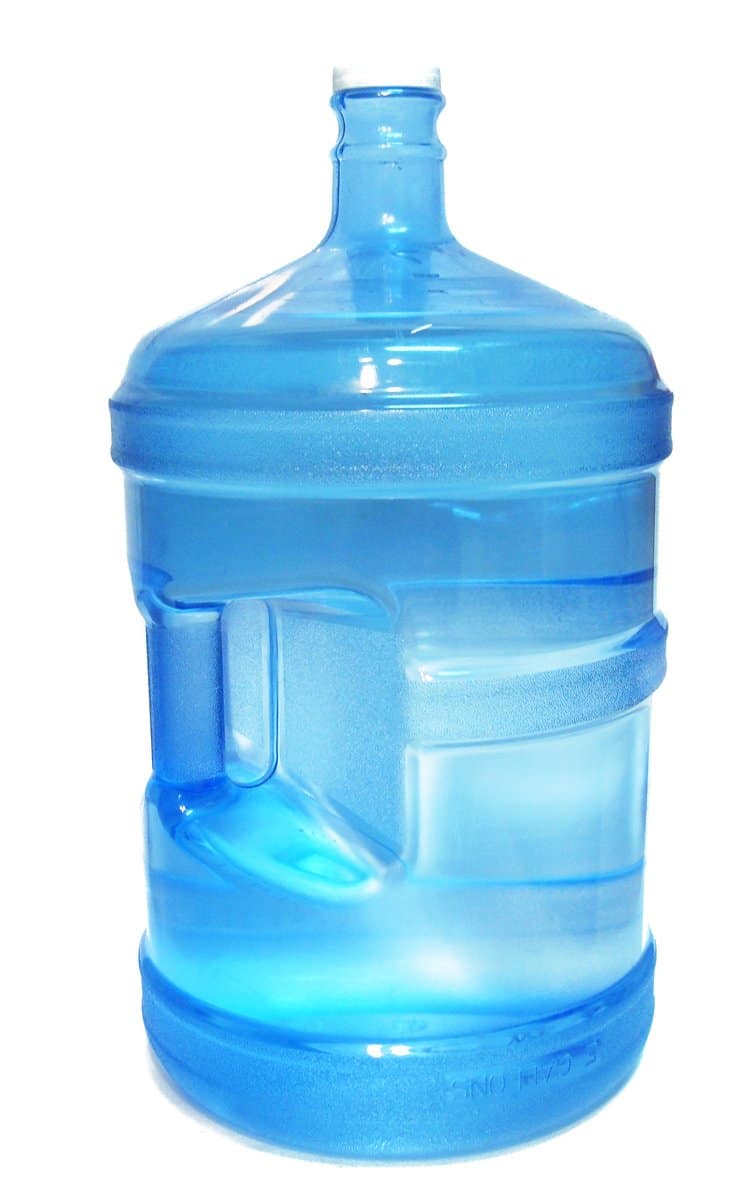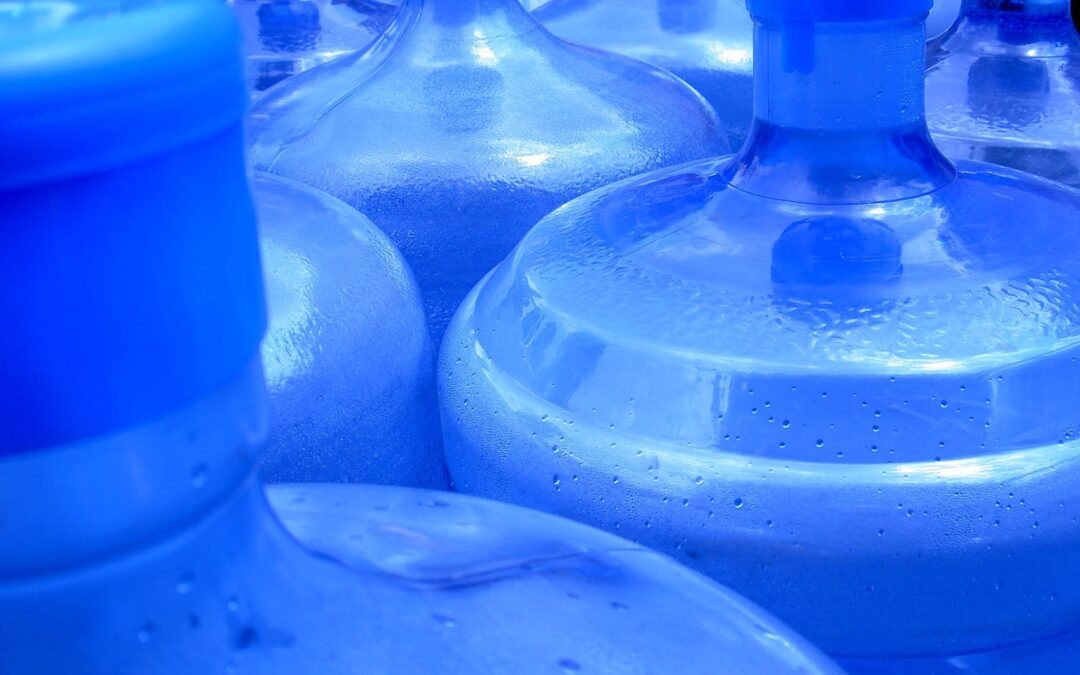Much to the delight of preppers and doomsday planners everywhere, this article will discuss solutions for emergency water storage. However, making arrangements for water storage may not be just the end of the world kind of thing, and stories of contaminated water supplies are not as outrageous as you might think.
For instance, in the 1980’s a marine base in North Carolina was in the news for contaminated water, and, more recently, Michigan, New York, and even Vermont have made headlines for tainted town water supplies. Plus, even if you own your own well or natural spring, you probably use an electric water pump to get the water to the different area of the house, so, in a national emergency, that may be not good either.
The big picture here is that it may not be a bad idea to keep some potable water on hand in case of an emergency. After all, it is not like we are talking about building a bullet-proof command center on top of your house or anything.
Water Storage Containers

Many blogs and articles recommend that households keep at least two weeks of potable water stored somewhere in the home at all times, and the importance of available potable water cannot be understated, as it takes a mere three days without water for the human body to start breaking down muscle and organ tissue. And, shockingly, according to one source, many Americans don’t even have access to an emergency 12-hour supply.
But, before we move ahead with talking about storing water, it is important to spend a bit of time on water storage containers. And at around $20 on Amazon, the Reliance Rhino 5.5-gallon Water Container is a good one. It offers solid BPA-free plastic and a durable spout and vent, and, for a little more, you could get the military-style polyethylene Scepter 5-gal Jerry Can.
These cans are made of a high-grade food-rated plastic that is meant to last over time, but you may want to think about quantity over quality, especially if you are storing water for a number of people, and the Reliance Aqua-Tainer 7-Gal container is a cube-like stackable option that is meant to be stored somewhere in a closet or pantry and drawn off from using a smaller, more portable container.
At around $15 with an Amazon Prime Account, the plastic on the 7-gallon cubes is reportedly BPA-free, but the plastic is thinner and more prone to dents and punctures. And don’t start thinking that every little bit doesn’t count, as the WaterBrick 3.5-Gal Four Pack makes storing water a neat and tidy affair. Moreover, you can go up to 5-levels high and, the more you buy, the more you save.
Water Storage Recommendations
But whatever storage container you go for, you should also choose a set of guidelines based on how much you want to store for how long. According to one site, here is a loose key to storing enough water for two weeks:
- Plan on at least 15 gallons per person and 30-45 for two people. So your overall cost for 6 good-quality 5-gallon containers should be around $120.
- Choosing a container with a convenience and durable spigot is also critical, as water is not an easy thing to manipulate without a way to dispense it.
- Keep in mind, the 15-gallon per person recommendation is based on minimum needs plus a little extra.
- The two-week mark is also indicative of an estimated 8 - 10 days of FEMA response time and planning ahead even further certainly will not hurt.
Moreover, access to water in a crisis is so important that you likely do not want to be spending time doing unnecessary work in preparing it or taking extra risks procuring at the moment. The idea in putting water away is that your water is there are ready for you to use without filtering, boiling, or trying to find it at the time.
Also, you want to avoid juice jugs or other containers that once held food in them, as these containers can puncture easily and are environments that are ripe for mold and bacteria growth that can make you sick very quickly.
One source, even recommends that if you insist on doing storage containers on the cheap then you should clean and sterilize Arizona Iced Tea jugs with bleach or a food-rated oxygen-based cleaner. The jugs are durable and semi-opaque to deter light from helping to grow nasties in your water.
Emergency Water Storage, According to the Experts
Now it is time to dispel some water storage myths, and, according to the Skilled Survival website, you can safely store water for 3-5 years in a pantry or in the freezer given that you have met the following criteria:
- You have used a food-grade durable container that is dent-resistant and crack-resistant, with proper seals and covers.
- You have used plastics with a 2, 4, or 5 recycle rating (preferably #2, HDPE-rated plastic).
- You have not placed your water supply on the ground or next to caustic chemicals, as the plastic of the container can absorb liquid or vapors around it.
- You have placed you water container away from heat, light, and wet environments.
- You have only filled your containers up 85% to allow for expansion.
- Before using your container, you have washed the container using the following method: fill it with warm water and some dish soap, rinse, and allow to air dry. Follow this up by filling the container with a quart of water and a teaspoon of unscented chlorine bleach and wait for 30 seconds. Shake it. Wait another 30 seconds. Empty and rinse.
Also, sometimes tap water makes for the best storage water as it has inevitably gone through some sort of treatment facility if you live in a town or city. Not only has it likely passed through a UV filter to kill bacteria and harmful enzymes it has also likely been treated with fluoride or other water preservatives.
This may be good news if you are stocking up, as fluoride has been proven to prevent tooth decay and water preservatives will allow for your water to be stored for longer periods, but preservatives are not, in fact, necessary for water storage. If you feel you need to add preservatives to your water but do not trust town municipalities to do it for you, you can simply add no more than five drops of unscented household bleach per each gallon of water, and that should do the trick.
Also, please note that water preservatives are recommended if your water comes from a well or spring, even if it has previously been tested. Additionally, always wash your hands before and after touching the water supply and be sure to use the same washing procedures described above with caps, lids, spouts, and any water transporting or consuming vessels. That is because getting sick in a survival situation is possibly less fun than being sick in a normal situation.
The Joys (and Caveats) of Plastic
So far, we have talked a lot about plastic, and there are good reasons; plastic is durable, lightweight, it can be used over and over again, it is moldable and stackable, it is widely available, and, not least of which, it is cheap.
You can find emergency water storage containers at Walmart, Amazon, NorthFace, REI, Cabelas, and other places were camping gear and prepping equipment is sold. A few names we like because of quality of materials, durability, and value are Reliance, WaterBrick, Saratoga Farms, Igloo, and Scepter.
But plastic is not a full-proof solution, and it is harder to clean than glass and easier to puncture than metal. It is also prone to cracking in low-humidity environments and easily absorbs vapors and nearby liquids. Plus, number 7-rated plastic can leach out harmful BPA chemical that can contaminate your water and make you sick.
Although the propensity of plastic to allow harmful chemical seepage is debatable to a degree, you should use only high-density polyethylene (#2 HDPE) food-grade products to be absolutely sure that your emergency water storage supplies are protected and safe.
Plastic is also notoriously difficult to sanitize due to the way it is molded, and there are often nooks and crannies that are darn near impossible to reach. Plus, if the plastic is corrugated, forget about it, as it is not worth the risk. Metal and glass containers are both much easier to clean, but they are bulkier, heavier, and prone to breaking, leaking, and rusting, so plastic, if you are careful, is the preferred choice.
Backup Water Solutions
- Durable, heat resistant, food-grade resin
- Molded handle for portability and easy handling
- Reusable, Refillable
- Screw On Cap
Quality | Price | Rating |
|---|---|---|
$$$ |
Quality | Price | Rating |
|---|---|---|
$$$ |
- Rigid five-gallon/20-liter rectangular water container
- Hideaway spigot with On/Off tap
- Made from BPA-free food approved polyethylene
- Dimensions: 12.1 by 9.3 by 15 inches (L x W x H); Weight: 2.1 pound
- Five-year warranty against manufacturer's defects
Quality | Price | Rating |
|---|---|---|
$$$ |
Quality | Price | Rating |
|---|---|---|
$$ |
So, we have talked about emergency water storage containers that you can rack, stack, and store in a pantry, and, while you may be able to easily get two weeks out of this kind of storage, any serious prepper will tell you can’t go wrong with 55-gallon water barrels.
Made from sturdy food-grade plastic, they have bungholes at the top, and many come with spigots at the bottom. Commonly used to store maple sap or syrup, these barrels are BPA-free and UV-resistant, and they will hold enough water for a family of four for about 27 days in one filling.
However, you are going to need space to store it, and you are not going to want to move it around too much as just one full barrel weighs approximately 440-lbs. You’ll also either want a spigot or a pump and a food-grade hose for convenience sake.
And, if 55-gallons is not enough, you can go up to 100-gallon or even 320-gallon containers, but good luck moving those around without a forklift. Moreover, for what it is worth, you could invest in rain barrels, water cisterns, catchments, and more, and dryer states like Texas even have rebates for the purchase of these water collection devices.
Plus, treating all of this water is easy with chlorine bleach or iodine, and you can even boil water if you are not sure of the source.
Water Storage Wrap-Up
In 2012, the Skilled Survival website did a survey of the level of preparedness of the average American in a crisis. And below we have relayed the information that they found. Off the top, though, staggeringly, 44 percent of Americans do not even have a First Aid Kit and 55 percent believe that local authorities will rescue them within a few days, even after Hurricane Katrina when FEMA took up to a reported 9 days to help many families.
Moreover, 53 percent do not even have a 3-day supply of potable water, and a ghastly 52 reported that they did not even have a designated family spot should they get separated in a crisis. Further, 42 percent of those surveyed have not committed emergency phone number to memory, and 21 percent do not even know if their work has an emergency preparedness plan.
So, even if you are not a so-called prepper, some of these percentages should be a little unsettling to you. The lack of First Aid Kits and family gathering spots certainly got our attention. But, to be fair, you can take all this information a couple of ways: either (1) modern society has gotten really good at responding to crises or, (2), more darkly, many Americans will be woefully ill-prepared during an emergency crisis.
So, please give this and other blogs the attention that they are due, and at least think about an emergency water storage plan. Small bottles, iced tea jugs, stackable pantry cubes, or 50-gallon food-grade containers will all do just fine. Simply clean and sterilize the bottles, as described above, fill them with water, drop a few splashes of scentless chlorine bleach or iodine in, and sit back and think about listing out all emergency numbers or rehearsing that family meeting spot.
Last update on 2022-04-30 at 14:04 / Affiliate links / Images from Amazon Product Advertising API





